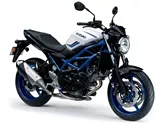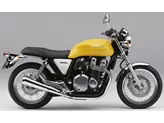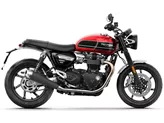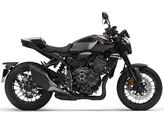Kawasaki Z900 RS 2018 vs. Suzuki SV 650 2023

Kawasaki Z900 RS 2018
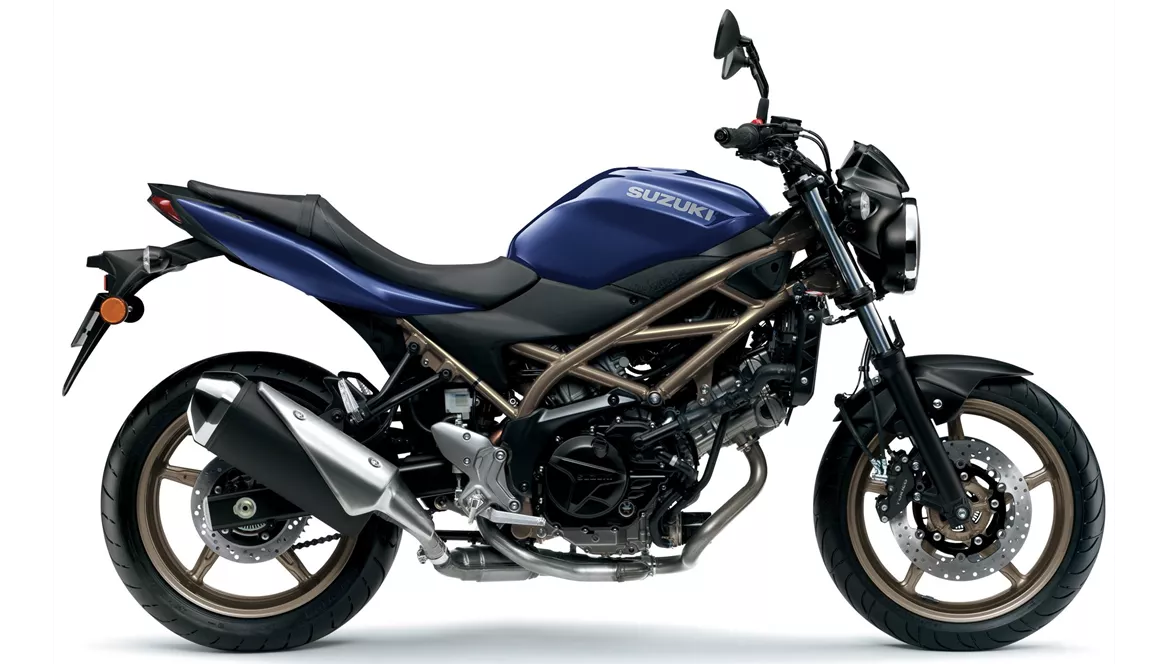
Suzuki SV 650 2023
Overview - Kawasaki Z900 RS 2018 vs Suzuki SV 650 2023
The Kawasaki Z900 RS 2018 and the Suzuki SV 650 2023 are both naked bikes that offer unique features and characteristics.
Starting with the Kawasaki Z900 RS 2018, it boasts a powerful and smooth in-line engine with 111 HP and 98.6 Nm of torque. This engine is known for its performance and delivers a thrilling riding experience. The bike is equipped with a fuel injection system and has four cylinders, providing efficient and reliable power delivery. Additionally, the Z900 RS has a liquid cooling system, ensuring optimal engine temperature even during long rides.
In terms of suspension, the Z900 RS features an upside-down telescopic fork at the front and a swing arm with a monoshock at the rear. The suspension can be adjusted for preload and rebound, allowing riders to fine-tune their riding experience. The frame of the bike is made of steel and has a tubular design, providing stability and durability.

Kawasaki Z900 RS 2018
When it comes to braking, the Z900 RS is equipped with double disc brakes at the front with a diameter of 300 mm and four-piston calipers. This setup ensures excellent stopping power and control. The bike also features advanced rider assistance systems such as ABS, ride by wire, and traction control, enhancing safety and stability.
In terms of dimensions and weights, the Z900 RS has a front tire width of 120 mm and a rear tire width of 180 mm, both with a diameter of 17 inches. The wheelbase is 1470 mm, providing stability and maneuverability. The seat height is 835 mm, and the bike has a kerb weight of 215 kg (with ABS). The fuel tank capacity is 17 liters, allowing for longer rides without frequent refueling.
Moving on to the Suzuki SV 650 2023, it features a V-twin engine with 73 HP and 64 Nm of torque. This engine configuration provides a unique riding experience and is known for its smooth power delivery. Like the Z900 RS, the SV 650 is equipped with a fuel injection system, ensuring efficient fuel consumption. The bike has two cylinders and a liquid cooling system, preventing overheating during intense rides.
In terms of suspension, the SV 650 has a telescopic fork at the front and a swing arm with a monoshock at the rear. The rear suspension can be adjusted for preload, allowing riders to customize their riding experience. The frame of the bike is made of steel and has a tubular design, providing strength and stability.

Suzuki SV 650 2023
The SV 650 is equipped with double disc brakes at the front with a diameter of 290 mm and four-piston calipers. While the braking system does not have advanced rider assistance systems like the Z900 RS, it still provides reliable stopping power. The bike features ABS for enhanced safety.
In terms of dimensions and weights, the SV 650 has a front tire width of 120 mm and a rear tire width of 160 mm, both with a diameter of 17 inches. The wheelbase is 1445 mm, providing stability and agility. The seat height is 785 mm, making it beginner-friendly and easily accessible for riders of different heights. The bike has a kerb weight of 200 kg (with ABS) and a fuel tank capacity of 14.5 liters.
In summary, the Kawasaki Z900 RS 2018 offers a more powerful engine, advanced rider assistance systems, and a larger fuel tank capacity compared to the Suzuki SV 650 2023. The Z900 RS also has a higher seat height and a slightly heavier weight. On the other hand, the SV 650 has a unique V-twin engine configuration, a beginner-friendly seating position, and a slightly lighter weight. Both bikes have their own strengths and weaknesses, and the choice between them ultimately depends on the rider's preferences and priorities.
Technical Specifications Kawasaki Z900 RS 2018 compared to Suzuki SV 650 2023
Pros and Cons in comparison
Pros and Cons in comparison
Kawasaki Z900 RS 2018

Its four-cylinder is silky smooth while delivering enough power to make you grin under your helmet. It is also very easy to move, which should make it a great commuter bike in everyday life and serve as an iconic fun bike at the weekend. The looks find the perfect straddle of classic design and modern details to form a coherent retro package that is also a worthy tribute to Kawasaki history. It's a great naked bike with a snazzy look.
Suzuki SV 650 2023

The Suzuki SV 650 has been on the market for 25 years, longer than any other motorbike. The engine has been updated to Euro5 and is now even more mature, which clearly fits in with the rest of the package. The SV 650 doesn't want to scare anyone, especially beginners. The chassis makes a solid, unagitated impression, the brakes require a lot of manual force to prevent unexpected overbraking. The look is timeless on the one hand, but on the other hand some components are really a bit outdated. On the other hand, the price is fair, as usual for Suzuki.
Price Comparison Avarage Market Price Kawasaki Z900 RS vs Suzuki SV 650
There are a few key differences between a Kawasaki Z900 RS 2018 and a Suzuki SV 650 2023. In terms of price, the actual average price of a Kawasaki Z900 RS 2018 is about 97% higher. Compared to Suzuki SV 650 2023 there are less Kawasaki Z900 RS 2018 bikes available on the 1000PS.de Marketplace, specifically 28 compared to 125. It takes less time to sell a Suzuki SV 650 with 133 days compared to 154 days for the Kawasaki Z900 RS. Since model year 2018 1000PS.de editors have written 26 reviews for the Kawasaki Z900 RS and 25 reviews for the Suzuki SV 650 since model year 2005. The first review for the Kawasaki Z900 RS was published on 9/6/2017 and now has more than 63,700 views. This compares to more than 14,200 views for the first review on Suzuki SV 650 published on 9/26/2008.










